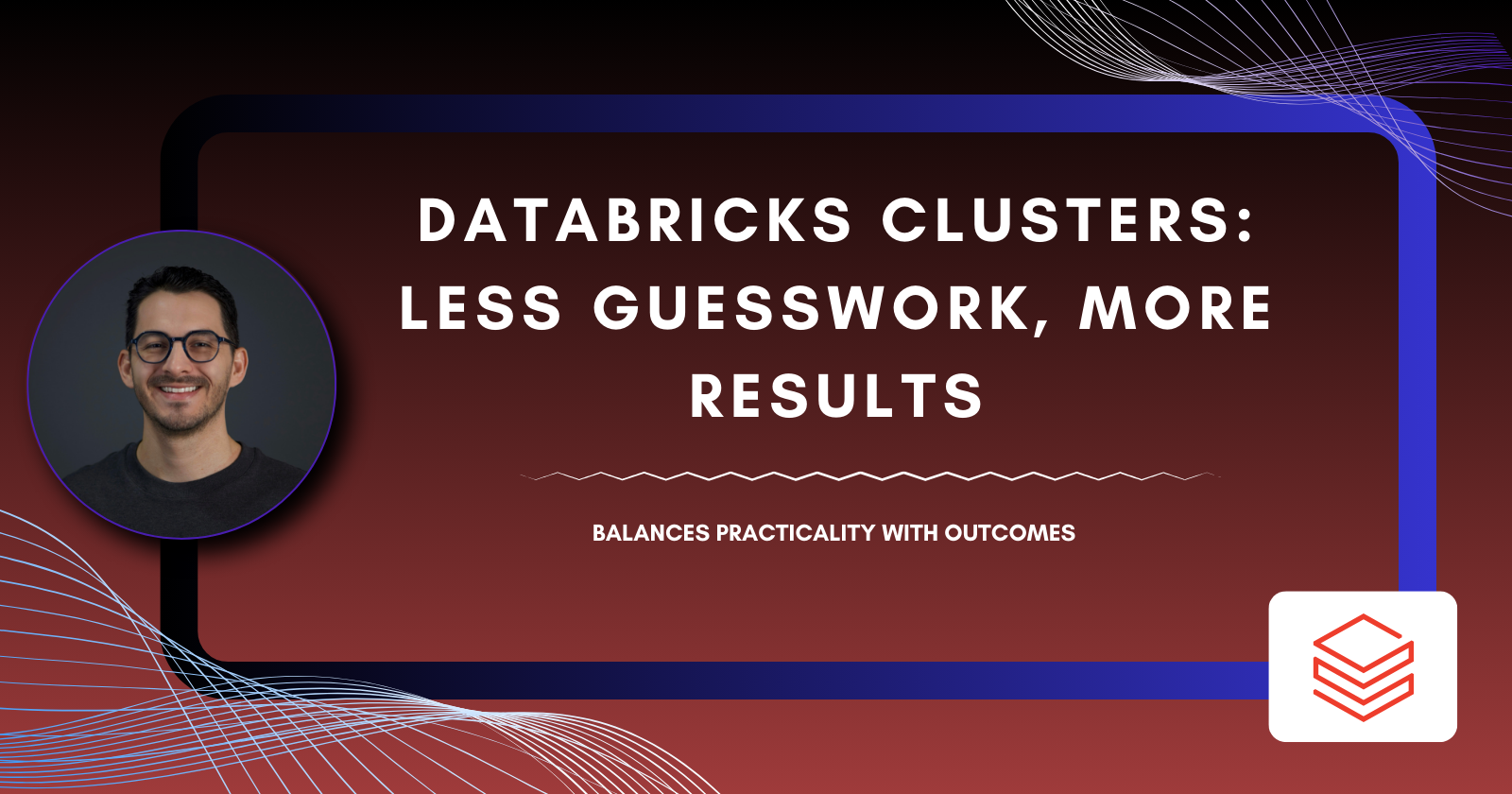Databricks Clusters: Less Guesswork, More Results
 Mario Herrera
Mario Herrera
Setting up clusters in Databricks can feel like trying to build a house without knowing how many rooms you need. Too few resources, and your jobs crash. Too many, and you burn cash. Let’s break this down step by step—with real examples—so you can match your clusters to your actual needs.
Step 1: Start by Asking, “What Am I Doing?”
Every workload is different. Think of it like cooking:
ETL jobs (like cleaning data) need strong CPUs (the “knives” of your kitchen).
Large joins or aggregations (e.g., combining sales data) need lots of memory (a big mixing bowl).
Streaming (real-time data) needs many parallel workers (like multiple chefs chopping veggies).
Example Table:
| Workload | Key Resource Needed | Instance Type Example |
| Daily sales ETL | CPU | c5.4xlarge |
| User behavior analysis | Memory | r5.8xlarge |
| Real-time logs | Fast storage | i3.4xlarge |
Real-world mistake:
A team used GPU instances (p3.8xlarge) for a basic CSV-to-Parquet conversion. They wasted $500/month. Switching to CPU-optimized nodes (c5.4xlarge) cut costs by 60%.
Step 2: Use Simple Math to Find Worker Count
Here’s a foolproof formula:
Number of Workers = (Your Data Size / Memory per Worker) + 20% Extra
- Why 20% extra? Spark needs breathing room for shuffling data and handling errors.
Example:
You have 500 GB of data.
Each worker has 64 GB of memory.
Calculation:
Base workers = 500 / 64 ≈ 8 workers
Add 20% buffer: 8 × 1.2 ≈ 10 workers
What happens if you ignore this?
A team ran a 1 TB job on 15 workers instead of the required 20. The job failed twice, costing them 3 extra hours and $200 in retries.
Step 3: Autoscaling—Set Smart Limits
Autoscaling isn’t magic. Set boundaries to avoid surprises:
Minimum workers: Half your calculated workers.
- Example: For 10 workers, set min = 5.
Maximum workers: Double your calculated workers.
- Example: For 10 workers, set max = 20.
Why this works:
A nightly job processing 300 GB of data used to run on 12 fixed workers. With autoscaling (5–20 workers), it now uses 8 workers on average, saving $150/month.
Step 4: Tweak These 3 Spark Settings
Most cluster issues come from ignoring these:
| Setting | What It Does | Example Value |
spark.sql.shuffle.partitions | Splits data during processing | 2 × Total CPU cores |
spark.executor.memory | Memory per worker | 75% of node’s RAM |
spark.driver.memory | Memory for the “brain” node | 16–32 GB |
Example:
A job with 100 CPU cores kept crashing. The fix? Setting shuffle.partitions = 200 (double the cores) to spread the workload evenly.
Step 5: Test with a Small Batch First
Never test on full data. Try this:
Run your job on 10% of the data.
Check the Spark UI for:
Scheduler Delay > 10%? → Add workers.
Disk Spill > 0%? → Increase memory.
GC Time > 20%? → Adjust
memoryOverhead.
Real example:
A 100 GB job showed 15 GB of disk spill during testing. Switching from 64 GB to 128 GB nodes eliminated spills and reduced runtime by 25%.
Putting It All Together
Let’s say you’re processing 800 GB of customer data:
Workload type: ETL (CPU-focused).
Worker count:
800 GB / 64 GB per worker = 12.5 → Round up to 13.
Add 20% buffer: 13 × 1.2 ≈ 16 workers.
Autoscaling: Min = 8, Max = 32.
Spark settings:
shuffle.partitions = 64(for 32 CPU cores).executor.memory = 48 GB(75% of 64 GB).
Result: The job runs in 2 hours instead of 4, with no crashes.
Why This Works
No overpaying: You’re not guessing—you’re calculating.
Fewer failures: Buffer zones handle Spark’s quirks.
Scalability: Autoscaling adapts to data spikes.
Subscribe to my newsletter
Read articles from Mario Herrera directly inside your inbox. Subscribe to the newsletter, and don't miss out.
Written by

Mario Herrera
Mario Herrera
Data expert with over 13 years of experience in data architectures such as AWS/Snowflake/Azure, optimizing processes, improving accuracy, and generating measurable business results.